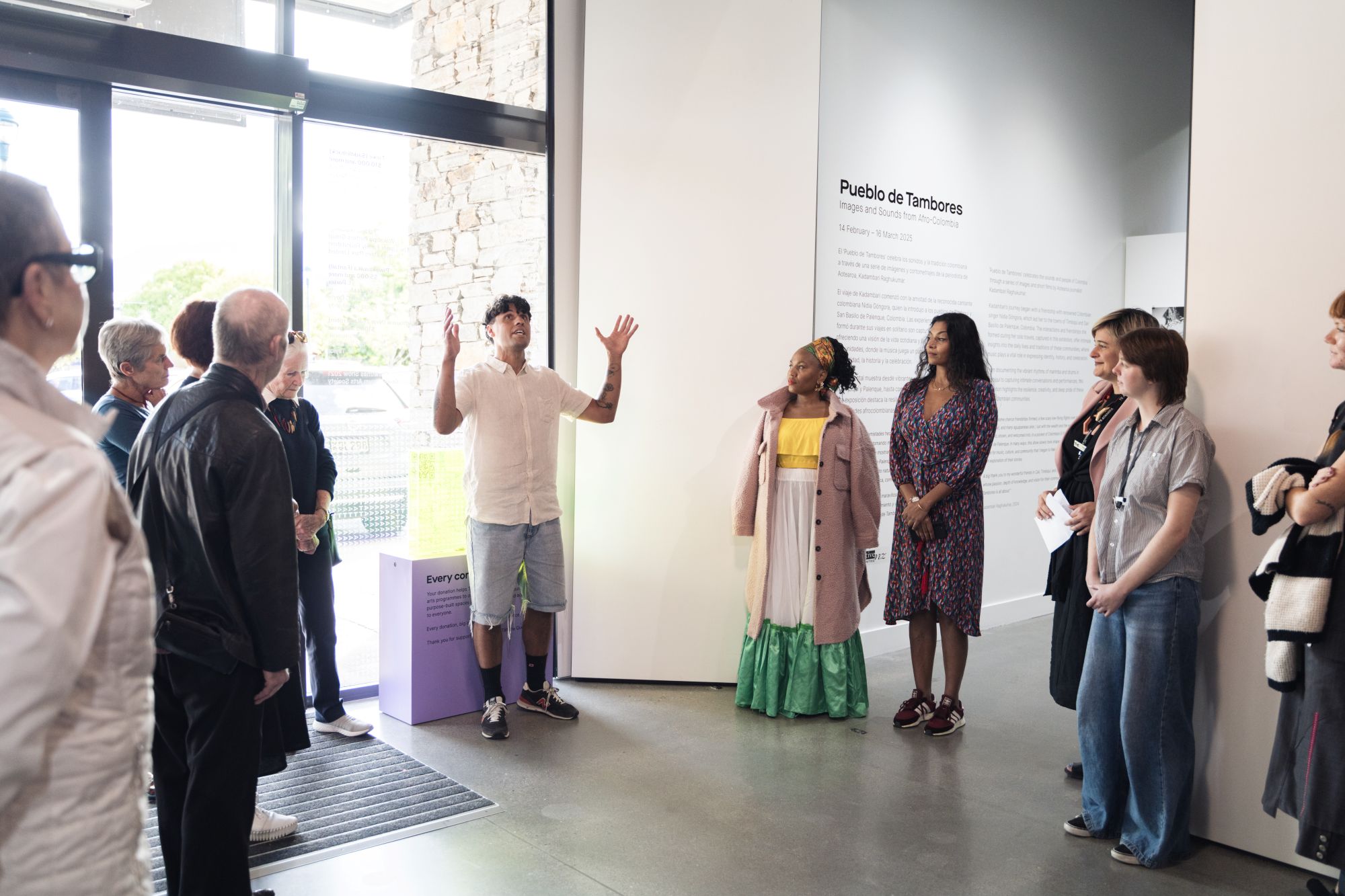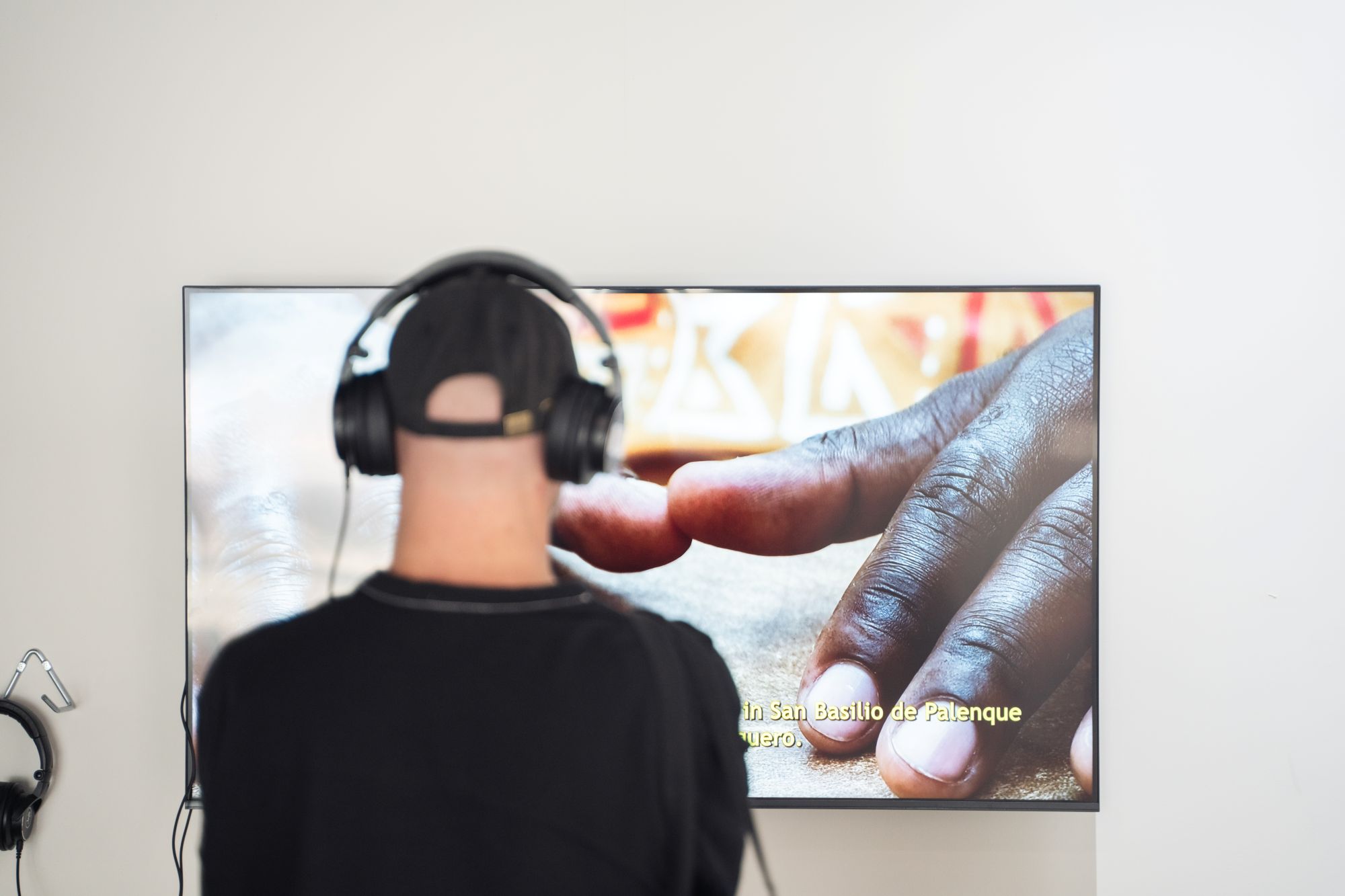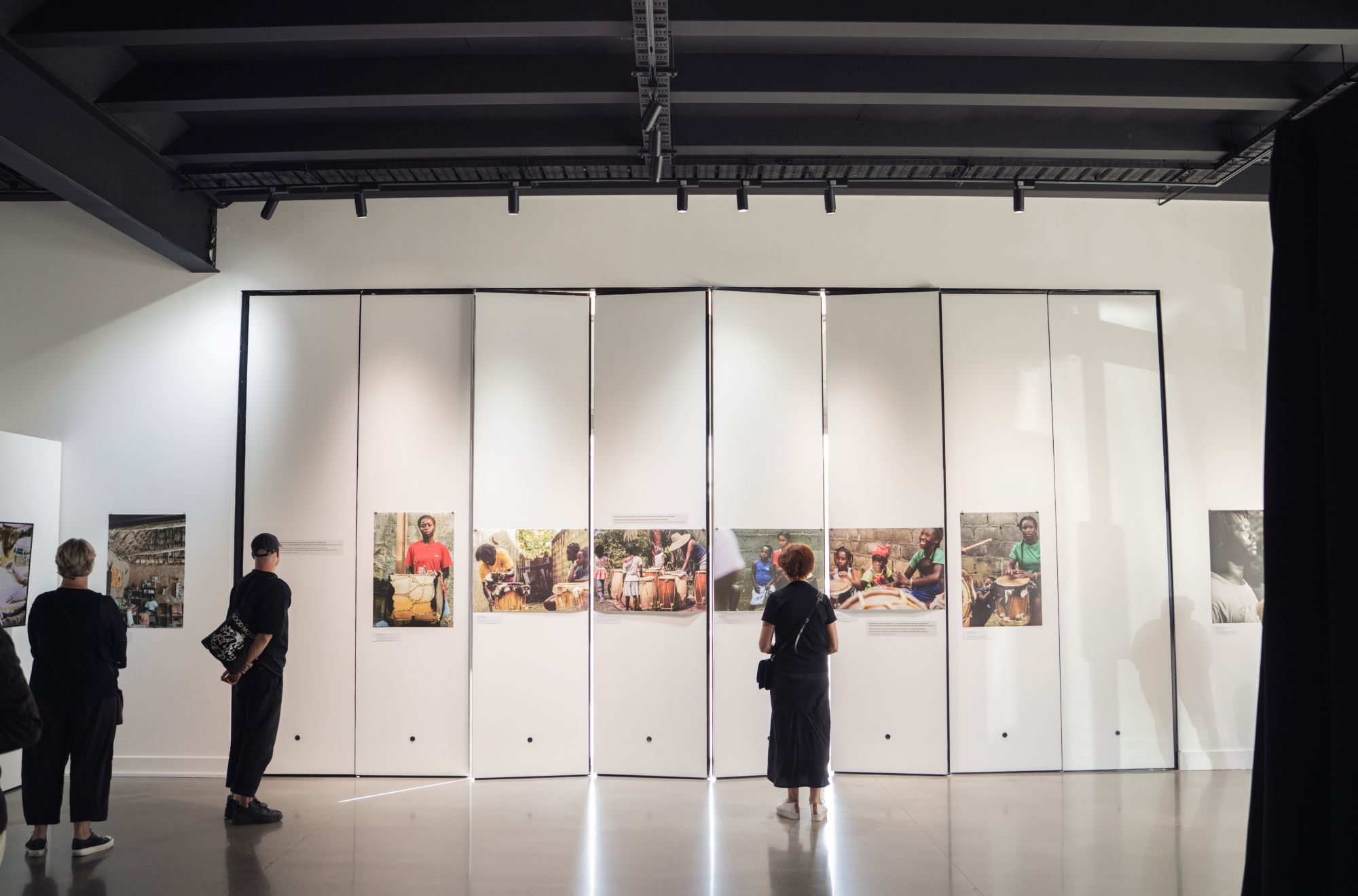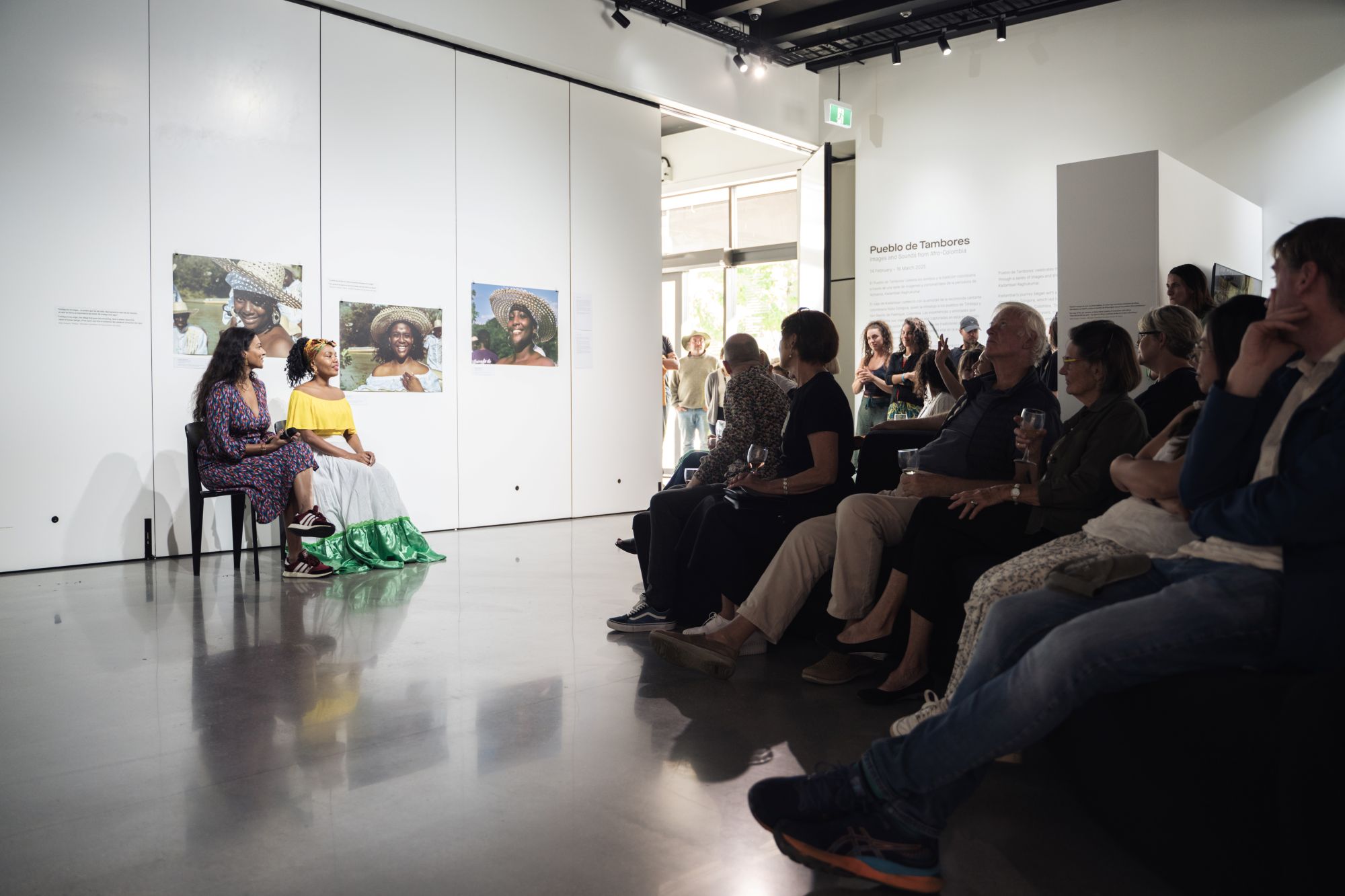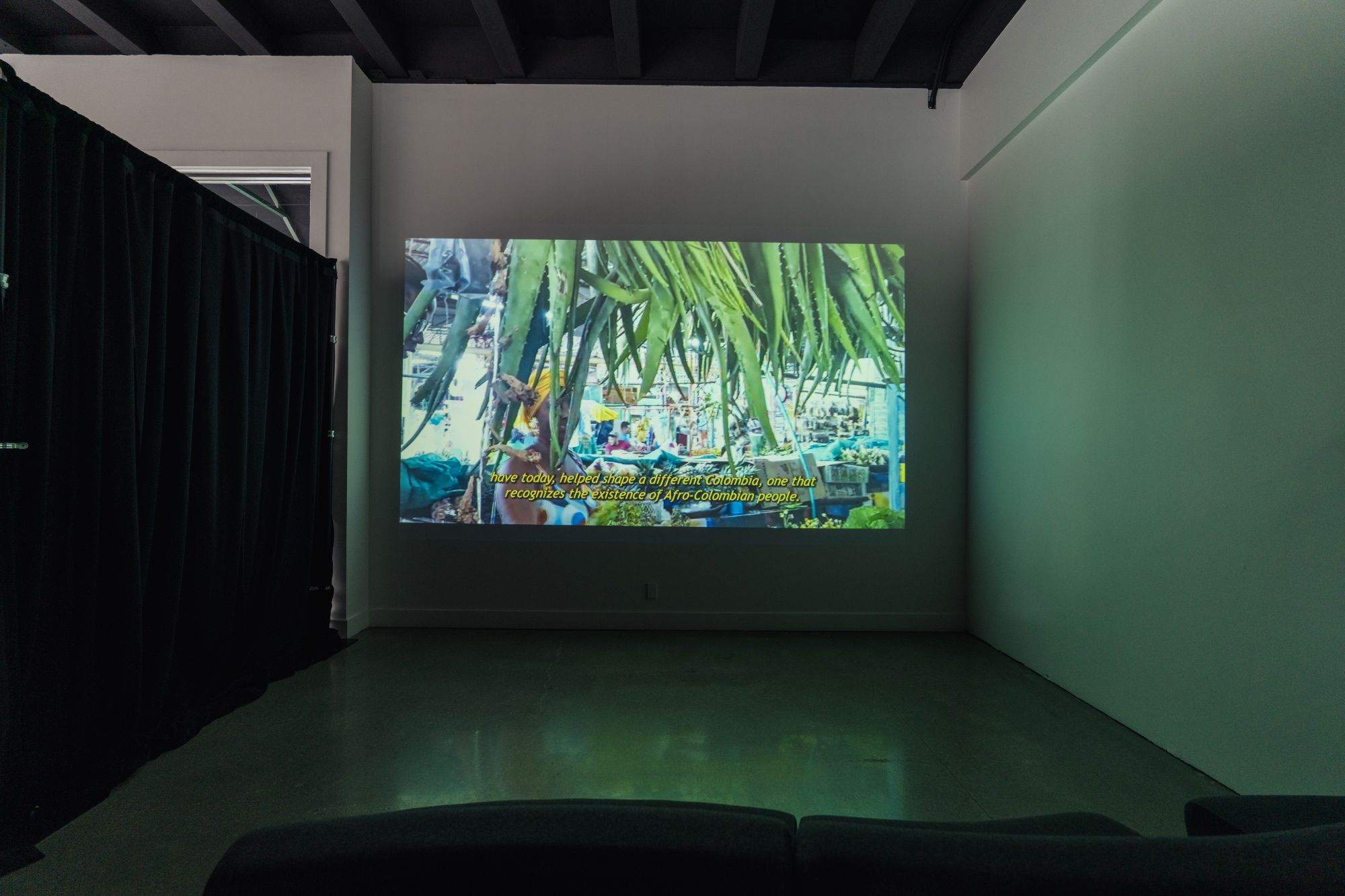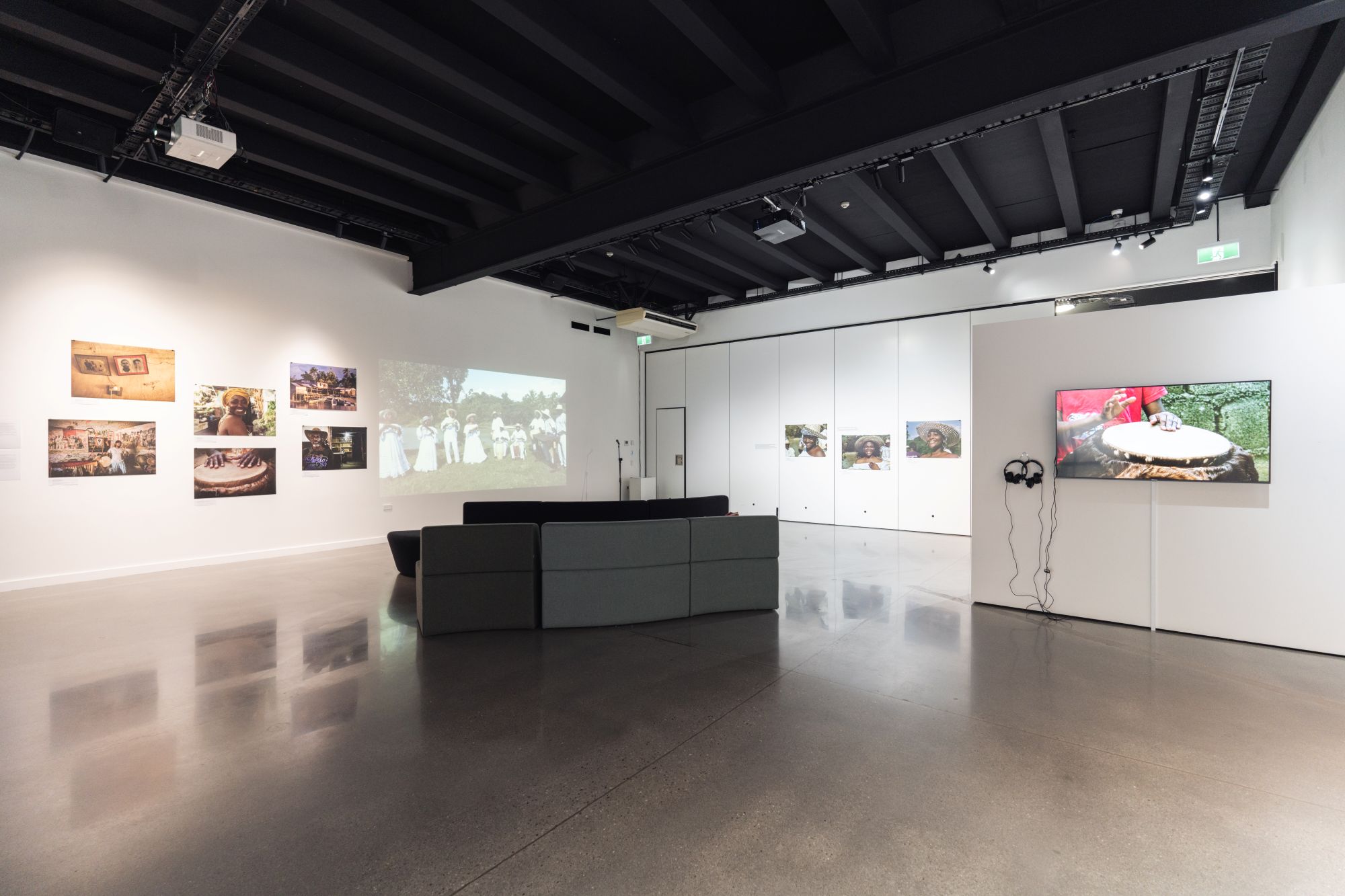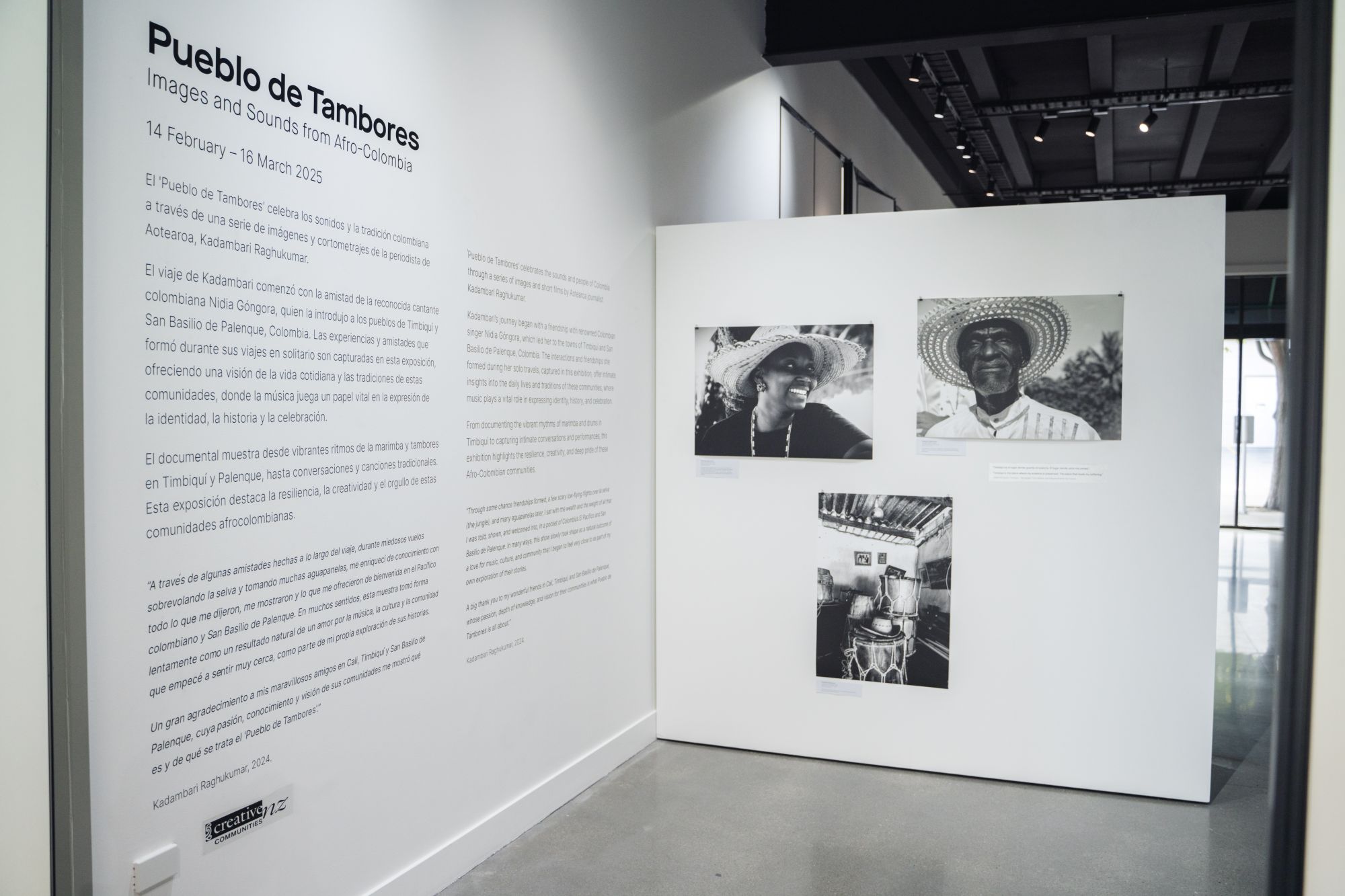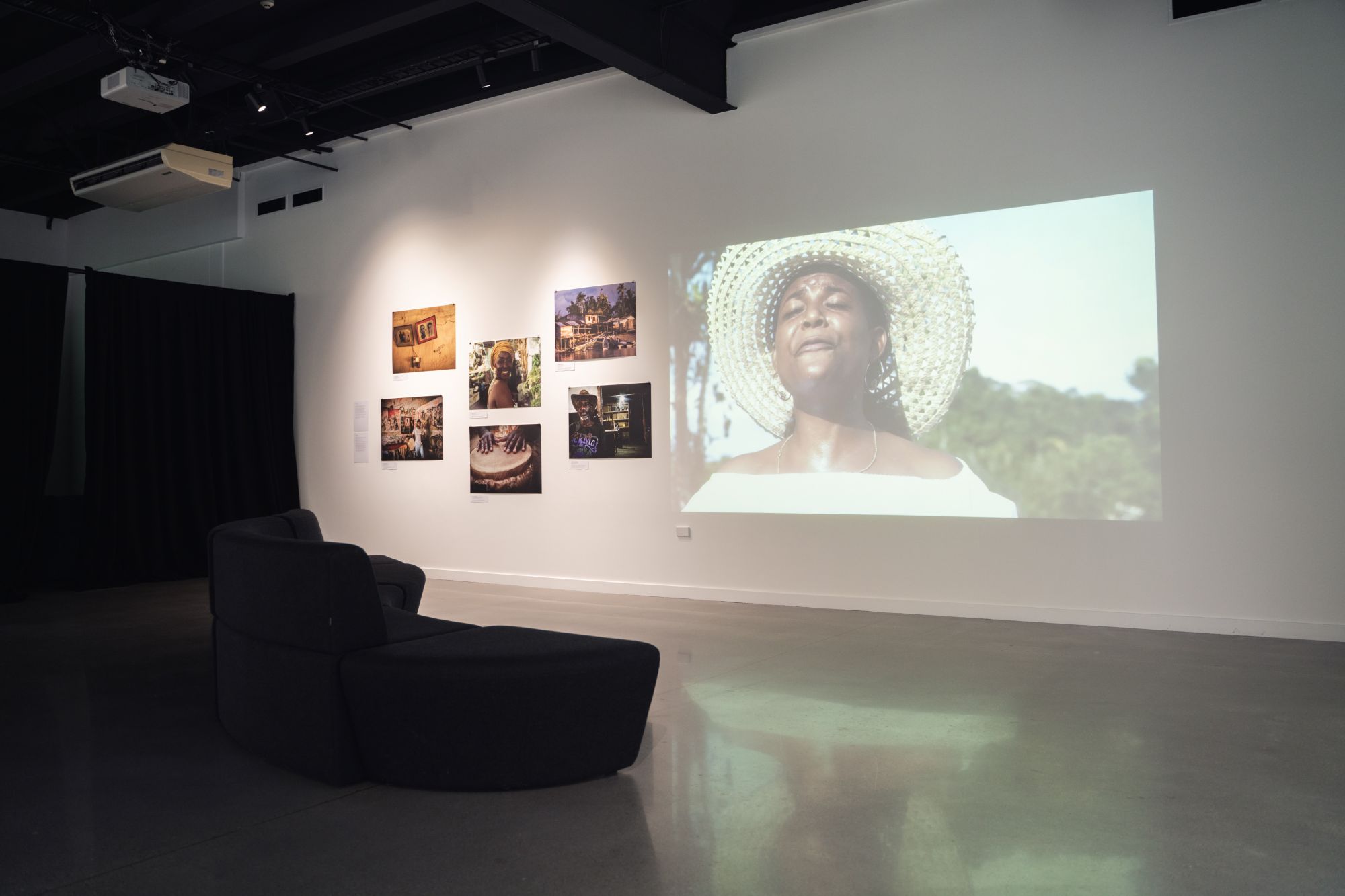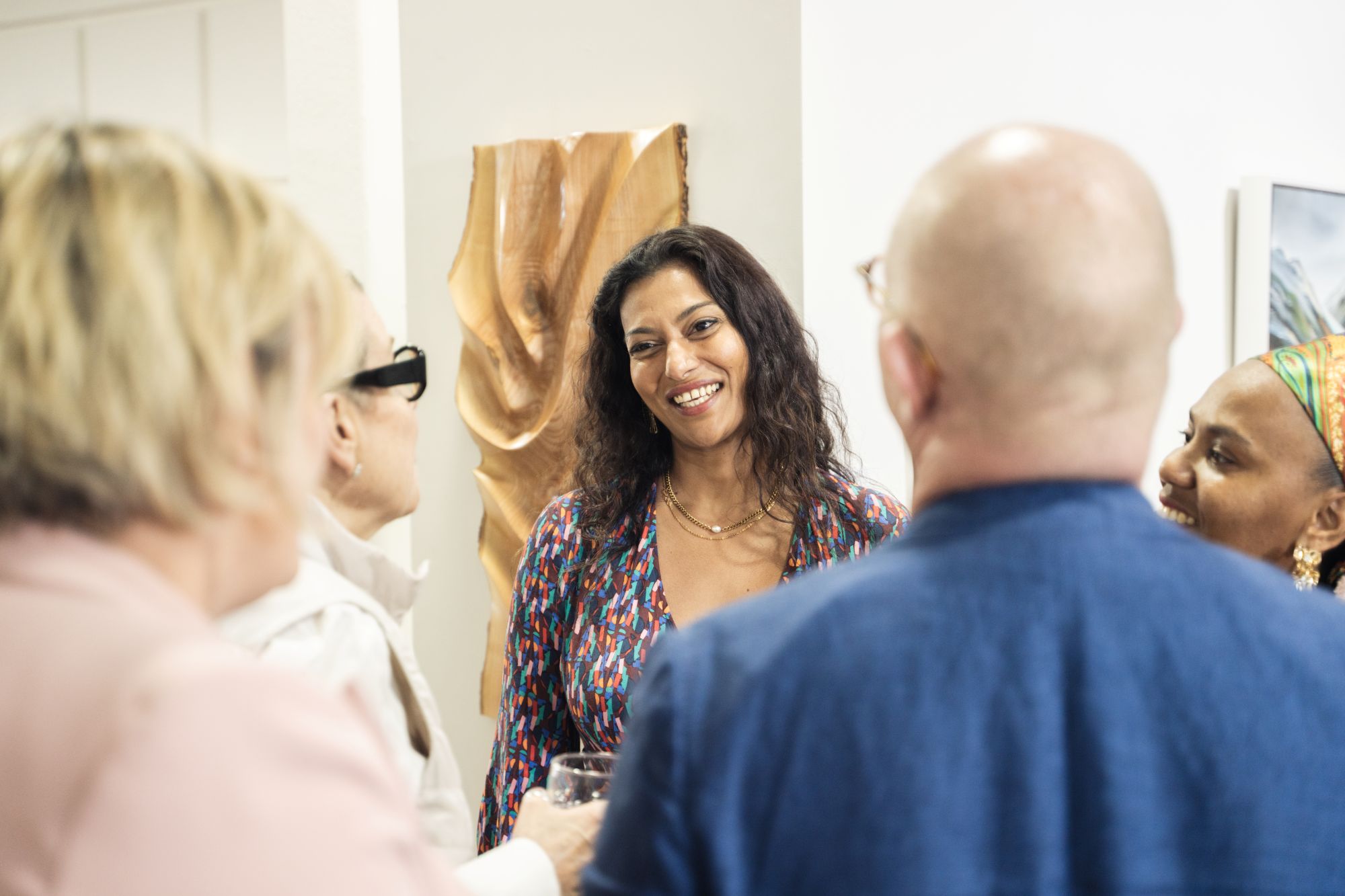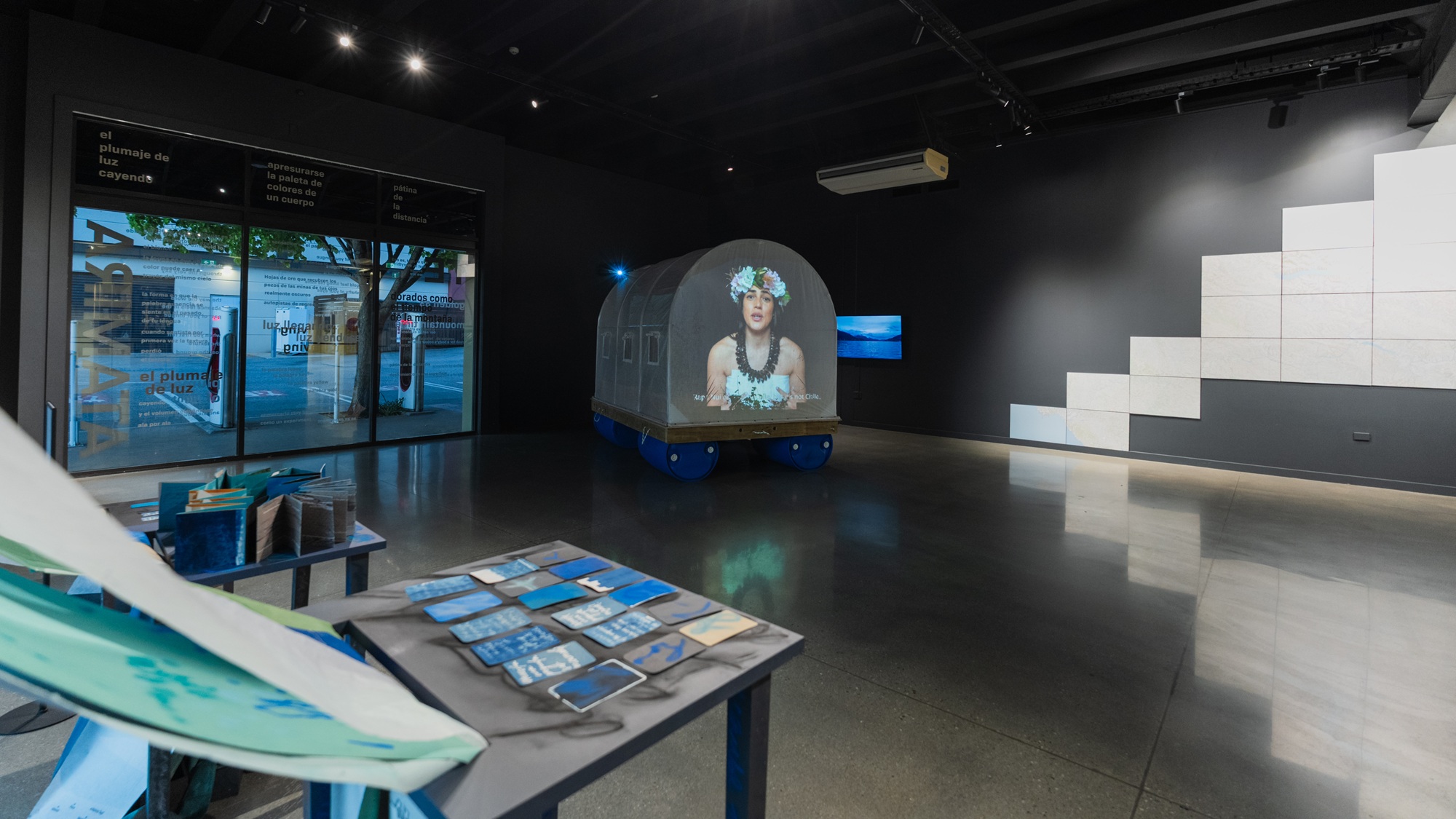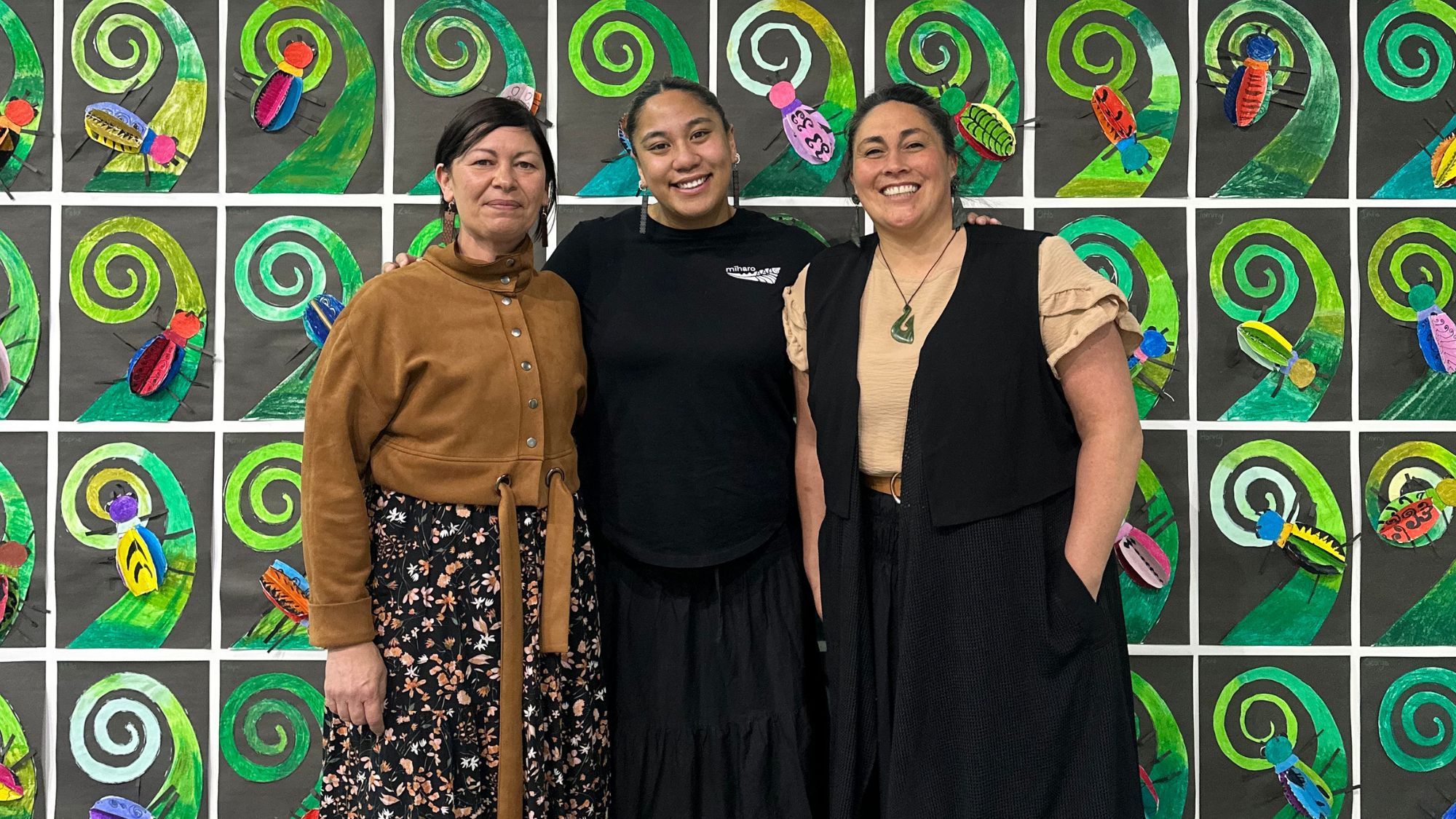Pueblo de Tambores
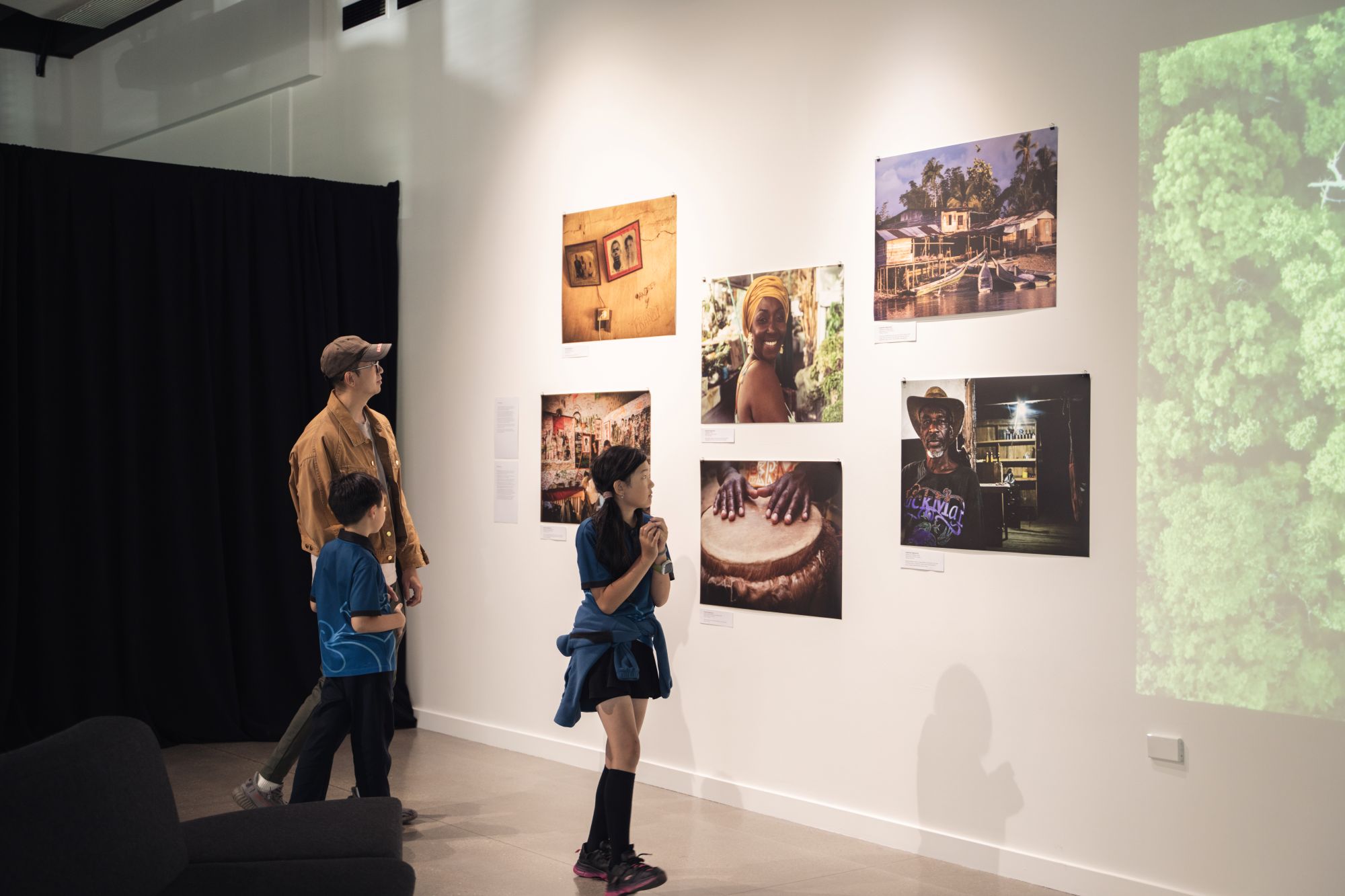
“Through some chance friendships formed, a few scary low-flying flights over la selva (the Colombian jungle), and many aguapanelas later, I sat with the wealth and the weight of all that I was told, shown, and welcomed into. In many ways, this show slowly took shape as a natural outcome of a love for music, culture, and community that I began to feel very close to.” - Kadambari Raghukumar. Displayed in WHAKAARI from 20 February 2025 - 16 March 2025.
In Pueblo de Tambores, Aotearoa-based journalist, stories producer and director Kadambari Raghukumar invites audiences to celebrate the rhythms, relationships, and resilience of Afro-Colombian communities through a striking series of photographs and short films.
The exhibition grew from a friendship with Nidia Góngora - Grammy-nominated singer, activist, and cultural ambassador of Colombia’s Pacific coast. That connection led Kadambari to the historic village of San Basilio de Palenque and the river town of Timbiquí - two powerful centres of Afro-Colombian music and culture.
“Our way of life, our customs, in there is plenty of connection with Africa. They did not kill the spirit - the spirit of Africa continues to live on in Afro-Colombians.” - Nidia Góngora
Travelling solo and building friendships along the way, Kadambari captured not only the vibrant rhythms of marimba, and drums, but also the quieter interactions and moments where culture is held and passed on.
“The culture of my land is an ancestral beauty - we carry this in our blood.” - Alborada de Timbiquí.
Through her lens, Kadambari offers an honest and personal account of Afro-Colombian life, where resilience, creativity, and pride echo in every beat. The exhibition reflects her careful listening of stories, songs, and communities - inside homes, schools, community spaces and on riverbanks.
Each image in Pueblo de Tambores is a window into the lives of people who see music as an expression of identity and survival. Besides Gōngoa and Alborada, among the many characters you meet are:
• Franki Hernandez Casiani, musician and teacher, whose home in Palenque becomes a a lively and loud school for young tambores.
• Siblings Diego and Emerterio Balanta, respected elders and keepers of musical tradition in Timbiquí.
• Singers from Alborada de Timbiquí, whose songs mark feasts and praise saints.
• Young aspiring musicians, quietly watching and waiting their turn to join the rhythm.
Kadambari says it's thanks to musicians and singers like Nidia Góngora that the once relatively unknown music of Afro-Colombia now occupies airwaves across Colombia, taking the sound beyond the mangroves and coastal villages of El Pacífico.
“Timbiquí is my origin, the village that gave me everything. Here I learned the value of being human, the value of the land, and the importance of existing. My umbilical connection lies here.”- Nidia Góngora
That deep connection between music, people and place, is what Pueblo de Tambores is about – a culture that is sung, danced, taught, shared, and fiercely loved.
With grateful thanks to QLDC Creative Communities.


